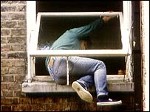Contacts
| Jason Malloy, Chief of Police | 541.574.3348 |
| Patrol | 541.574.3348 |
| Detectives | 541.574.3348 |
| K9 Unit | 541.574.3348 |
| Records Division | 541.574.3348 |
| Community Service Officers | 541.265.4847 |
| Volunteers | 541.574.5866 |
| Dispatch | 541.574.5807 |
| Tip Hotline (ability to leave voice message only - not monitored 24/7) | 541.574.5455 |
| Text-A-Tip (not monitored 24/7) | 541.270.1856 |
| Lincoln County Jail | |
Connect With Us
   |
||||
Frequently Asked Questions
Forms and Documents
| Policy Manual |
| Employment Application |
| Organizational Chart |
| Records Request Form |
| Ride-Along Application — Ride-Along Details |
| SB111 |
| Taxi Driver Permit Application |
| Volunteer Application |
Burglary Prevention Tips
Every 15 seconds in the US, a home burglary takes place, but there are so many things we can do to dramatically reduce the chances of falling victim.
It's a sobering and frightening thought that in the time it takes you to read this -- say 10 minutes -- 40 home burglary crimes will be committed in the US.
That's one home burglary every 15 seconds.
Some of those home burglaries will be by scam artists who previously checked the homes out by posing as legitimate visitors, talking their way in and maybe even opening a window in a bathroom for easy access when they return.
Some will be opportunists, who just happen to spot an easy target in a neighborhood -- like an open door or window.
And yet others will be experienced crooks who know how to "case a joint" without being noticed, and know all the tricks of the trade for breaking and entering.
The average time it takes for a burglar to break into a home is less than a minute, and the amount of time they spend inside is little more than 10 minutes -- though, posing as contractors or furniture removers, they've been known to take much longer and completely empty a home.
What to Do When You Disturb a Home Burglar

Criminologist Elicka S.L. Peterson-Sparks was making her rounds to check a vacationing neighbor's home and apparently surprised a burglar who escaped out the back.
Elicka had gone into the home, noticed a light on, and made a hasty retreat to her car, where she phoned local law enforcement.
She naturally did the right thing. As Elicka explained later: "Burglaries rarely involve assault of any kind, but, when they do, it is almost always because the thief is cornered."
"If I'd have noticed anything from outside, I would never have gone in. It's also quite common for injuries to occur because homeowners assume the burglary is over, and walk in to assess the situation, unwittingly trapping the thief."
"The moment you figure out something is amiss, leave. Get to a safe place and call the cops. It's not worth getting hurt."
15 Burglary Prevention Tips
- People are your best defense -- be a visibly nosy neighbor. Let anyone walking the neighborhood or sitting in a parked car see you watching them.
Make a note of car license plates and if anyone behaves suspiciously or stays in their car for a lengthy period, call the police.
-
Tell close neighbors you trust if you plan to be away or expect any deliveries.
If they're in the know they're more likely to notice something you didn't mention and spot unexpected callers at your home (burglars often call at the front door of a house to check if anyone is there).
-
And, if you are going away, use timers to switch lights on and off at random, cancel newspapers and put a hold on your mail deliveries -- or, to guard your schedule, arrange for the trusted neighbor to collect them.
-
Having a dog is a huge deterrent. Ironically, burglars are far more likely to avoid a house with a small dog than a big one -- small dogs tend to be nervous and less easy to trick into calming down. They're less trustful and bark louder and longer.
-
Take a walk around your home, inside and out, to figure where the weakest link in your security might be -- like leaving a window open in a secluded spot.
High-risk places include the door from your garage into the house, back doors, side "breezeways" where a burglar would not be seen, and large shrubs close to the residence where thieves could hide.
-
Take action to increase protection in these vulnerable places -- like installing keyed window locks and deadbolts on doors and using toughened glass in windows and doors. Remove those shrubs.
If you leave windows open on the second floor, make sure your extension ladder is locked away.
-
Be wary about who you allow into your home and how much information you give about your belongings and schedule.
This applies even with neighbors you don't know or fully trust ("inside" jobs are not uncommon). And don't leave valuables in view, inside or from outside the house.
-
If you're able, vary the times you leave and return home. If your household has several cars, vary who drives them, making it more difficult for an observer to know who is home and when.
-
Make it tough for home burglary prowlers to know whether they're under surveillance.
Fake cameras can be good -- but only if they could be taken for the real thing, not cheap plastic devices with flashing lights, which home burglars easily identify.
Fake security stickers or signs don't work either, but, if you have an alarm, real stickers and signs work.
-
Control access to and around your property. Consider motion-activated lights, even on the street outside your home.
Neighborhood Watch, Video Surveillance, No Parking,and No Outlet signs can be effective against home burglary too. This way, would-be thieves know you mean business.
-
Motion-activated cameras are another powerful weapon -- both as a home burglary deterrent and, linked to a computer (and, better yet, to a home network), to record images of your unwelcome visitors.
These days, these devices are inexpensive. Network-linked cameras costing around $85 can even email images so you have an off-site backup (ours sends images automatically to a separate gmail account, so even if the camera is disabled, we still have the pictures online).
-
An alarm system, preferably with a visible box outside the house, will not only deter crooks but sound an immediate alert of a home burglary.
You might seriously consider a system that's monitored 24/7 by a security company who will quickly notify law enforcement of an incident.
-
Gates, both to your property and in gated communities, can also be a home burglary deterrent, (even if there is another way out). If you have a guarded, gated community, use "Resident" stickers.
Renters could have a temporary sticker they must surrender at the end of their lease, while visitors collect a pass which they must return on leaving.
-
Avoid creating temptation. Don't leave things like lawn mowers and bikes unattended outside; lock them up.
Inside, burglars are more likely to go for "middle of the road" valuables than expensive jewelry and appliances -- because they're easier to redeem for cash.
-
Don't hide a key. Home burglary crooks know all those "secret" places.
Other Precautions You Can Take
- Keep a detailed inventory of your valuable possessions, including a description of the items, date of purchase and original value, and serial numbers, and keep a copy in a safe place away from home -- this is a good precaution in case of fires or other disasters. Make a photographic or video record of valuable objects, heirlooms and antiques. Your insurance company can provide assistance in making and keeping your inventory. Trim your shrubbery around your home to reduce cover for burglars.
- Mark your valuables with an engraver with your driver's license number. Marked items are harder for a burglar to dispose of and easier for police to recover.
Remember the three L's of Crime Prevention: LIGHTS, LOCKS & the LAW!
LIGHT up your residence, LOCK your doors at all times, and call the LAW when you see something suspicious.
There are two other important home burglary facts you should know.
First, if you've previously been burglarized, you're statistically more likely -- six times more, according to some criminologists -- to be targeted again, so you will need to take extra precautions.
And second, home burglaries can involve much more than the theft of your valuables.
If the crooks steal personal and confidential information, you could become a victim of another major scam -- identity theft.


